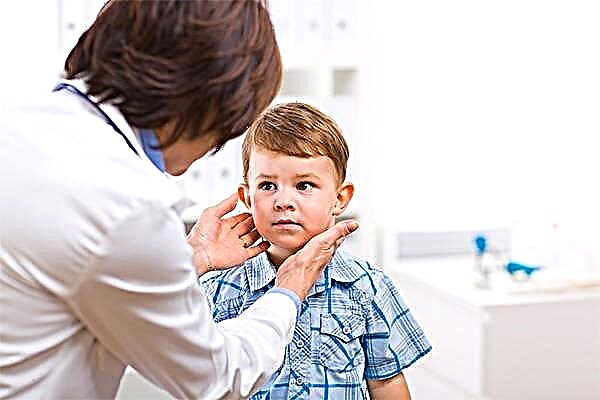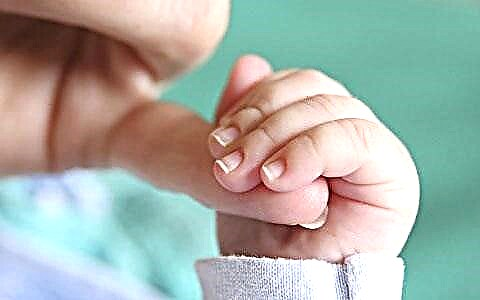
Curious and ubiquitous children rarely miss the opportunity to learn something new and interesting. Therefore, abrasions and hematomas, bruises and burns accompany childhood almost always. In this article we will tell you what to do if a child has a burn, how to give him first aid.
What it is?
A burn is a violation of the integrity of the skin, damage to its structures by the aggressive effects of very high temperatures or certain hazardous chemicals and compounds. Most often, children get sun and radiation burns, which are caused by careless handling of electrical appliances. Often, babies are burned with boiling water, hot oil... Damage with chemicals - acids, alkaline compounds is also widespread. But frostbite or long-term traumatic effect on the child's body by vibration (vibration injury) traditionally have nothing to do with burns.


Burn injuries are considered the most common child injury on the planet. Medical statistics say that burn injuries rank second in the number and likelihood of deaths. The first one is the injuries sustained in road traffic accidents and car accidents.
This type of injury is common in all age groups of children - babies, however, get burns less often, each such case is associated exclusively with parental oversight and violations of safety rules.
As soon as children master independent walking and begin to learn about the world more actively, the risk of getting a burn increases tenfold.

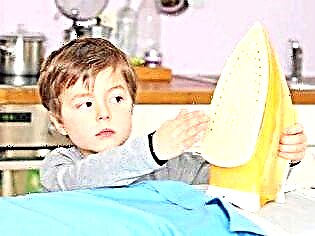
It is believed that burns are quite difficult to treat, and therapy is not always successful, despite the fairly high level of development of modern medicine.
Types and features
The main types of such traumatic injuries are named directly related to the cause that caused them. Distinguish:
- thermal injury (caused by prolonged exposure to the sun, hot water, burns from an iron, boiling oil, and so on);
- chemical burn (household chemicals, consumer and industrial acids and alkaline compounds act as a damaging factor, sometimes the injury is associated with contact with the juice of some plants, for example, burns from hogweed);
- radiation injuries (for example, electric shock, radiation traumatic injury).
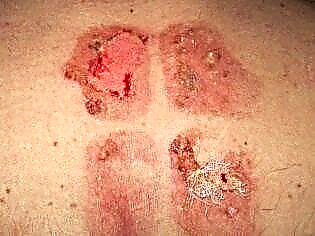

Burns are divided into different types and degrees, which depend on the extent of the lesion, on the area affected and the depth of the traumatic effect. It is clear that a burn of the palm or finger will be more easily tolerated than an injury to the entire hand. Facial skin lesions and foot burns are considered the most painful.
Much depends on what exactly and under what circumstances the injury was received. For children, the most common situations are:
- Open fire, flame. The area of skin lesions is usually quite large, but the depth is relatively small - at the level of 1-2 degrees. When injured by an open fire, a child may often experience concomitant burns of the respiratory tract, organs of vision, and this is the most dangerous factor. A common complication is infection of the affected tissues, because when the affected area is released from the particles of burnt tissue, clothing, it is not always possible to get all the fibers and threads.
- Liquid burns. Boiling water, milk, oil usually cause small burns in their area, but deep enough in their degree of manifestation (at the level of the second or third degree). The respiratory organs do not suffer from such thermal damage, the burns are rather superficial.
- Steam... If a child is burned by steam, then the trampling zone is mostly large. But such burns are not deep, for the most part they are superficial. Often, only the respiratory organs are injured (for example, with improperly performed home inhalation with hot steam).
The greatest danger is inhalation of steam and burns of the respiratory tract. It is this complication that accompanies steam trauma in 99% of cases.


- Incandescent hot objects... Burns from an iron, a hot frying pan, mom's hair curling iron are the most common thermal injuries among child patients. The area of injury is always strictly limited by the size of the object to which the child kissed, if, of course, the touch was single. It is extremely rare to be large. But the depth of the lesion is large - from 2 to 4 degrees. The most common complication is a violation of the integrity of the skin layers. This occurs during first aid, when a red-hot object is abruptly pulled away from the skin. Usually it is removed along with part of the epidermis and dermis.


- Chemical acid burns... Despite the fact that chemical burns are considered one of the most dangerous for children, they are rarely deep. This is due to the chemical properties of acids. When in contact with the skin, such substances cause rather extensive lesions, but the affected tissues quickly turn into a scab, and this becomes an obstacle to the penetration of acid into the deeper layers of the skin. A curious fact - the more concentrated the acid, the less deep the burn will be, since a scab will form faster from the burned tissue.
- Alkaline chemical burns... Alkalis are more insidious in their action substances, since the body does not create either a scab or other biological protein barriers to the penetration of an aggressive compound into the skin layers under their influence. Alkaline lesions are quite deep and dangerous.

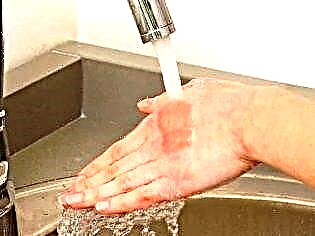
- Electrical burns. If a child is damaged by a discharge arc, then burn marks will necessarily appear in two places on the body - at the point of entry of the discharge arc and at the point of its exit. This type of burn is small in area, but has a significant depth. The most dangerous condition occurs when an electrical current from the entry point has passed to the exit point through the region of the heart.
If the injury occurred from a short circuit, and the current did not travel through the victim's body, then the burns will have all the characteristics of open fire or flame burns.
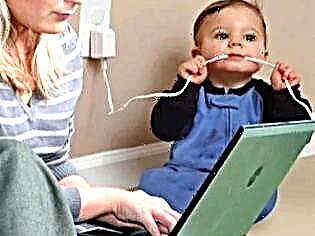

- Sunburn. Thermal injury is widespread, especially in summer. The area of the lesion with excessive exposure to UV rays is large, sometimes it covers the entire body. The degree is rarely higher than the second. The greatest danger is the concomitant possible thermal damage to the retina, as well as dehydration and heatstroke (solar disease). The burns themselves are easily treatable if they do not exceed the second degree.
- Radiation and ionizing burns... These are the most severe forms of burns, since tissue regeneration is impeded by disruption of vascular function and the resulting increased bleeding. It is clear that the main danger in case of damage to the skin by radiation or light radiation in an atomic explosion is not a burn, but a rapid radiation sickness.
- Combined and concomitant burns... Combined are those skin lesions that are accompanied by additional trauma - a fracture or dislocation, for example. And combined are such thermal or chemical injuries that are caused by the impact of several damaging substances and factors at once.


Degrees
Foreign doctors use a three-stage classification of all burn injuries, regardless of the cause. Their classification is pretty simple. In the first degree, only the outer skin is affected, in the second, the middle layer, the dermis, is affected. And with the third, the superficial epidermis, the middle dermis, and the subcutaneous tissue also suffer. In Russia, they use a four-stage classification, which prescribes to divide four degrees.

Our standards, approved back in the middle of the last century, look like this:
- 1st degree burns. These are the lightest burns, in which only the outer layer of the skin, the epidermis, is affected. They are manifested by redness of the skin of varying intensity. The site of exposure swells a little and hurts quite badly. As a rule, such injuries do not need qualified medical care, they disappear after a few days, and scars and scars do not remain after recovery.
- 2nd degree burns... With such an injury, not only the surface areas of the epidermis are affected, but also part of the growth layer of the epidermis. It is not difficult to find out this degree - the affected area of the skin not only turns red and swells, but also becomes covered with blisters and blisters filled with serous fluid. The temperature for a 2nd degree burn is elevated to subfebrile values (37.0 -37.8 degrees). In some cases, medical attention is needed to avoid the likelihood of infection of the wounds that have arisen at the site of the bursting blisters. A newborn and a baby with such a burn must definitely be examined by a doctor; older children can be content with home treatment.

- 3rd degree burns... With them, both the outer and middle layers of the skin (epidermis and dermis) are affected. There are two subspecies of such injuries - burns of 3 A degree and 3 B degree. Letter A means injuriesin which the dermis is partially affected. The sebaceous and sweat glands remain intact, as well as some of the hair follicles. Burns look like a dark scab. The blisters that appear in the shortest time after getting a burn are large, they are filled with serous fluid and blood impurities. Despite the terrible appearance, the child almost does not feel pain. The treatment should be carried out by a doctor, therapy takes place in a hospital, if the child is small and at home with a visit to the doctor, if it is a teenager. The skin can heal on its own, provided there is no secondary bacterial infection. The letter B means such severe burns, in which not a single layer component of the dermis (middle layer) has survived. All layers, down to the fiber itself, are burnt. Treatment always requires compulsory medical supervision in a hospital of specialized burn centers or corresponding departments of hospitals.
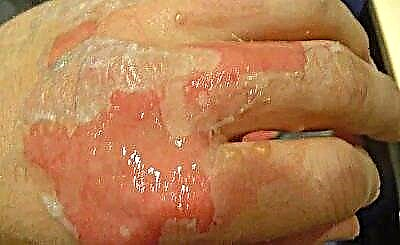
- 4 degree burns... This is the most extreme degree at which all structures of the skin, including adipose tissue, are completely destroyed. Blackening and charring of bones and muscles is observed. The pain is completely absent, since the nerve endings have died. A large area of such burns leads to shock and often death. A small area gives doctors the opportunity to fight for the life and health of a little patient. The situation is almost always complicated by the development of burn disease (the reaction of the whole body to the injury), sometimes - the development of sepsis.
Forecasts are mixed. The outcome is influenced by the child's age, the state of his immunity, the presence of additional diseases.
Effects
To assess possible further "echoes" of a burn injury, you need to know exactly the degree, depth and area of the lesion, assess the severity of this lesion and what structures and tissues of the body are affected. The formation of the consequences is also influenced by how urgently and correctly first aid was provided, and subsequently - what treatment was prescribed. Unfortunately, doctors often make mistakes in assessing the degree and depth of the lesion, underestimating them, which leads to serious consequences.
With burns of 1-2 degrees, traces on the skin may not remain. But at 2-3 degrees, even with the correct and timely assistance of a medical nature, scars and scars remain on the skin, the site of the lesion is overgrown with coarse scar tissue. Many of these consequences are partially reversible - specialists in the field of plastic surgery come to the aid of young patients.
With severe or extensive burns, burn disease develops. It can also accompany superficial forms of injury, but provided that more than 30-35% of the body is affected.
If the burn is of the fourth degree, then 10% of the body for an adult and only 5% of the body for children is enough for the development of the disease.
With it, shock develops, which can last from a day to three days. Then the stage of severe intoxication begins, in which decay products enter the blood. As the wounds progress, they begin to fester, and this can last up to several months. Quite often, with a burn disease, a child needs surgical assistance aimed at forced cleaning of wounds.
After the disease, complications often develop - lymphadenitis, the appearance of abscesses. The worst consequence of a burn is gangrene.

First aid
If a child has received a burn, then parents must urgently provide him with first aid, the final prognosis and the severity of the consequences of the injury depend on how correctly this is done:
- It is important to interrupt the baby's skin contact with the cause of the lesion as soon as possible.... If it is the sun's rays, you need to place the child in the shade, if a red-hot object, you need to quickly but very carefully and carefully remove the object from the skin, if the burn is chemical, it is important to quickly rinse the affected area with running cool water in large quantities.
- In case of electrical injury, you do not need to grab the child and try to drag him to the side, because the current will strike the one who is trying to help. It is necessary to stop the supply of electricity by turning off the device or de-energizing the entire room.
- With a thermal burn, the skin must be cooled, unless, of course, they are disturbed. In case of a sunburn, it is recommended to apply a sheet or diaper soaked in cool water; in case of a burn with boiling water, do several rinses with cool running water. The duration of each wash should not exceed 10-15 minutes. Such measures have a beneficial effect on the further development of the situation only on condition that a cool effect is exerted on the burned skin areas no later than two hours after the injury.

- In case of a burn with an open fire, you should not try to independently remove the melted remnants of clothing, fabrics, and individual threads from the site of injury. It will still not work to do this completely at home, and the risks of bleeding, infection of wounds and the occurrence of pain shock grow many times over. It is best to cover the affected area with a sheet soaked in cool water and call an ambulance or take the child to the nearest hospital on your own if the burn is small. With an extensive burn, transportation in an ambulance is required, since some technical capabilities of such a car may be needed to maintain a stable condition of the baby.
- In case of a chemical burn after thoroughly washing the injured skin areas, leave the affected area uncovered, free for oxygen access and call an ambulance or take the child to the emergency room or hospital on your own.


Sometimes parents themselves exacerbate the condition of their child and complicate the task for doctors who have to treat a baby, when, solely out of good intentions, they try to be first aid to him with gross mistakes. Here is a list of what in no case should you do if a child has received a burn injury:
- Lubrication of the burn with products containing fats is strictly prohibited. Baby cream, butter, sour cream for a burn - this is additional work for doctors who will have to remove the greasy film, and additional torment for the child who will have to endure this removal. Fatty substances do not provide any practical and therapeutic help, they do not reduce the burn, do not relieve pain, do not promote healing.
Sour cream on the back with a sunburn or palms burned by an iron is a common misconception that has already harmed more than one thousand small patients with burns above 1 degree.


- It is impossible to cool the skin exposed to heat or radiation by applying ice to the affected area. Only natural fabrics moistened with cool water.
- With a combined injury or a combined burn, it is not the burn that comes first, and other injuries, and therefore the severity of fractures, dislocations, concussions should not be underestimated. It does not make sense to transport the child for hospitalization with every burn with accompanying injuries. If there is a suspicion of a fracture of something, it is better to provide first aid relevant to the burn injury and call an ambulance, making sure that the child is in a horizontal position with his head raised at rest.
- Do not make any injections, including pain relievers, you cannot smear the burn area with ointments... This can make it difficult to diagnose and lead to inappropriate medical procedures. For example, at 3-4 degrees of thermal or chemical damage, the victim does not feel pain due to the death of pain receptors and nerve endings. This is an important diagnostic feature. If you preliminarily enter drugs and anesthetize, then the child will temporarily stop feeling pain even with lighter burn injuries. This will increase the risk of medical error.


- Self-cleaning the wound from scabs or other foreign particles using tweezers, as it is sometimes advised to do some "experts" from the vastness of the Internet, is categorically impossible. Without full-fledged anesthesia (an Analgin tablet is not considered such anesthesia), the procedure will torment the baby, and the lack of full-fledged lighting (as in the operating room) will not allow you to see and get all foreign fragments without exception. In addition, there is a possibility of bleeding.
- You never need to bandage anything. An improperly applied bandage will only increase the swelling and lead to necrotic changes. In addition, doctors will still have to remove such a bandage, and this will cause severe pain to the child.
- Sometimes well-meaning parents in case of severe burns and concomitant injury, bleeding, they try to apply a tourniquet to the child. This cannot be done. Disruption of blood supply to the affected limb can lead to necrosis. A child who could be provided with normal medical care as a result may lose a limb completely.


- It is very important to remember that if there are several burn victims, then first of all it is necessary to provide emergency assistance to the one who is silent. With a high degree of probability, this child is in shock, he develops a burn disease that threatens his life. A child screaming and asking for help is always a patient with fewer lesions, since at stage 4 he will neither scream nor ask. Such a child receives assistance in the second place.
When providing first aid, some parents often forget that all actions should be phased and well-coordinated, without unnecessary fuss and panic. There is only one algorithm: to eliminate the impact - to request medical assistance - to cool the burn site if the skin is intact.
If the burns have violated the integrity of the skin, deep charred wounds, bones, muscle fragments are visible, nothing should be cooled or touched.

You just need to call the resuscitation team and monitor the child's condition. In case of loss of consciousness, you can bring him to his senses by bringing a cotton swab dipped in ammonia to the nose, in case of cardiac arrest - you should definitely do a heart massage with the laying on of hands and with mouth-to-mouth artificial respiration. In an extremely serious condition associated with burns of the respiratory tract, loss of consciousness and the development of respiratory failure, the child should be quickly and decisively intubated with improvised means - using a kitchen knife or any sharp object to cut the trachea and the spout of a kettle or any tube for insertion into the trachea, so that provide the baby with oxygen.
Treatment
Therapy for minor burns
Burns of 1-2 degrees usually do not need inpatient conditions, although a baby with an area of damage of more than 5% of the body can be sent to the hospital. At home, at the first stage (on the first day or two), it is forbidden to apply ointments and creams to burns, as well as bandage the child. With severe pain, you can use a spray with lidocaine for pain relief, with an increase in temperature, you can give antipyretics based on paracetamol.


In the second stage, when the bubbles and blisters begin to open, the surface must be treated with antiseptics. It is best to use disinfectants in the form of sprays, for example, Miramistin, or liquid antiseptics that do not contain alcohol, such as classical hydrogen peroxide. At the final stage, when the burn is covered with a crust formed or dries up, if there were no blisters, for the speedy healing and regeneration of the skin, it is permissible to use such external agents as Baneocin, Panthenol and Bepanten for the child.
It is impossible to remove the crusts, it is inappropriate to bandage burns at the final stage if the child is large enough and understands that there is no need to touch the sore spot. If the toddler is at a less conscious age, it is better to apply a light recent bandage.


Therapy for severe burns
In case of serious burn injuries, when there is a need for hospitalization, doctors, in addition to treating the skin and applying antibiotics locally and systemically, will provide the child with active infusion therapy. The fact is that large or deep burns lead to the loss of protein and a large amount of fluid by the child's body. This deficit will be made up by making the child drips with saline, glucose, calloid and crystalloid solutions.
If the burns are caused by electric shock, heart medications may be added to the infusion. In almost all cases, intravenous nutrients are administered.
Leather treatments can be done in two ways - open and closed. When open, the wound is not bandaged, since the natural dry scab prevents the growth of pathogenic bacteria in the affected area. The wound can be irradiated with infrared rays, ventilators can be used for drying. With the closed method using dressings, antimicrobial drugs are simultaneously prescribed. The specific means and method of bandaging depend on how quickly the burn heals.

For dressings, drugs with anti-microbial activity will be used - hydrogen peroxide and potassium permanganate solution. To maintain the physiological balance, a solution of furacilin and dioxidine, antibacterial drugs "Levomycetin ointment" and "Erythromycin ointment", as well as antibiotics-sulfonamides are used. Antibiotics will not always be applied directly to the wound. Sometimes they are simply soaked in bandages.
Surgical intervention
Surgical intervention is not always necessary, but sometimes a child cannot do without it. This applies to situations associated with the need to clean deep burn wounds, as well as remove burnt tissue fragments or necrotic consequences. To clean the wounds, an operation is performed - a necrotomy. It goes away with local anesthesia. The surgeon dissects the affected area, gets to the living layer, and cleans out all layers that cannot be restored.
Necroctomy is prescribed when it is necessary to completely remove large areas affected by a burn, or to amputate burned limbs or parts thereof.

Dermatoplasty is a cosmetic operation, it is done to children in order to reduce external defects, to minimize visual harm to the baby's skin. Plastic surgery is done for injuries up to grade 3 inclusive. In a child with grade 4, such an operation does not make sense. Quite often, a child with severe burns undergoes all three operations in turn.
Rehabilitation
The child quickly forgets about minor burns that the mother manages to heal at home. The same cannot be said if the baby had to endure serious burns. First of all, this is a big psychological trauma and rehabilitation includes not only physiological measures, but also psychological assistance to the child on a constant basis.
Post-traumatic stress disorder in children after burns is so severe that they need the help of qualified psychotherapists and even psychiatrists.

According to statistics, to one degree or another, this disorder develops in 8 out of 10 children. The child will gradually increase physical activity after a severe burn. The doctor will definitely write down the exercises and the time of classes in an individual rehabilitation plan. Parents must strictly follow the points of these recommendations at home.
After the first stage, which is based on the restoration of movements and psychological adaptation, a decision will be made about the possibility and necessity of cosmetic plastic surgery.
Prevention
The most common burns are children under 5-6 years old and adolescents. The former are almost always (in 95% of cases) injured at home. The second are outside the home. To protect the child from burn injury, you should strictly adhere to simple safety rules:
- A child should not be left alone where the risk of burns is high - in the kitchen, in the bathroom, in utility rooms where boilers or gas boilers are located.
- Pots with only boiled soup and pans with cutlets should be placed on the burners farthest from the edge, and if, nevertheless, they are left on the edge, then the handles of the dishes should be turned to the side so that the child cannot reach them and overturn the container with boiling water on himself.
- All hot liquids (kettle, cup of tea) should be retracted as high as possible and as far away from the edge of the table as possible. If a child sits at the same table with adults, then he should not reach for dishes with hot food.

- Don't hold your baby in your arms or carry it around in a "kangaroo" while cooking. Anything can happen.
- All electrical wires in the house where children grow up should be placed in special electrical boxes so that the child cannot reach them even with a very strong desire and desire.
- If possible, then the temperature of the water in the faucet in the bathroom and in the kitchen should be limited so that the child cannot burn himself if the tap is accidentally opened. Special electronic limiters will help to limit the temperature.
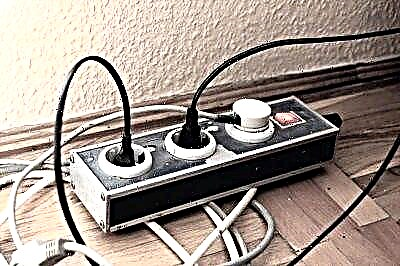
- If a child is playing on the floor, no need to carry a hot cup of tea or a tray of hot soup over it. This is how many babies get severe burns.
- Electric cookers and heaters with an open type of spiral, it is advisable not to use it at all in a house where children grow up, and if there is no opportunity to refuse to use them, the devices should be placed where children never enter under any circumstances.
- Particular attention should be paid to safety of the child when relaxing in the country or at a picnic. The kid should not come close to a brazier or a fire, no need to teach him how to make a fire and use a lighter, or pick up flammable liquids.
- Household chemicals and any caustic and hazardous substances (solvents, acids, alkalis) should not be freely available. It is not enough just to put them in a specific "secret" place, you should definitely make sure that this place is well locked, for example, with a padlock, in order to exclude accidental detection of chemicals by children.
For information on how to provide first aid to children with burns, see the next video.

